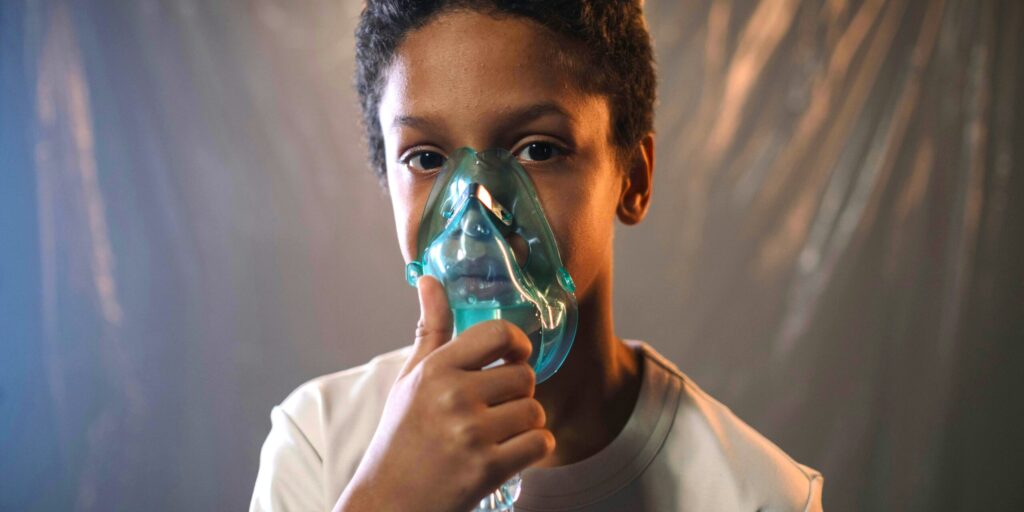Read time 4 minutes
A Breath of Perspective
When we think of incurable lung diseases, the first images that come to mind are oxygen masks, hospital corridors, and endless coughing.
But…
What if I told you that some patient journeys are filled with resilience and even quirky life hacks?
This is the story of Chintan, a 41-year-old English teacher from Jaipur. He lives with Idiopathic Pulmonary Fibrosis (IPF). It is a rare, incurable lung disease that causes scarring of the lungs.
Doctors can’t reverse the damage, but Chintan has found ways to live fully and teach us lessons that go far beyond medicine.
The Teacher Who Jokes About His Lungs
I often tell my family, “My lungs are like old school blackboards, too much chalk dust, and they just don’t clear up.”
That’s IPF in simple terms: Scar tissue builds up in the lungs, making them stiff and less able to transfer oxygen into the blood.
Symptoms I face daily:
- Shortness of breath, even while climbing a few stairs
- A dry, persistent cough
- Fatigue that feels like carrying a backpack full of bricks
- Occasional chest discomfort
Instead of hiding, I decided to share my journey online. My posts are sprinkled with a bit of humor: “If you hear me coughing, don’t panic, it’s just my lungs trying to start a band.”
What’s New: Things I Want You to Know About IPF
Most people haven’t heard of Idiopathic Pulmonary Fibrosis, and even fewer know how it works. Here are some surprising facts:
- Idiopathic means “unknown cause.” Doctors still don’t know why IPF starts.
- It affects about 3 million people worldwide, but awareness is low.
- The average survival after diagnosis is 3–5 years, but some live much longer with proper care.
- New treatments like antifibrotic drugs (pirfenidone, nintedanib) can slow progression, though they don’t cure.
- Lung transplants are the only potential long-term solution, but not everyone qualifies.
The Fun fact:
Some researchers are studying whether gut bacteria influence lung scarring. Its an unexpected link between digestion and breathing.
Finding Joy in the Everyday
Despite the challenges, I have built a life full of small joys:
1.Morning ritual:
I water my balcony plants slowly, saying, “They breathe out oxygen, I breathe it in, we’re partners.”
2.Work hacks:
I use a portable oxygen concentrator when walking long distances, joking, “It’s my personal Wi-Fi router for air.”
3.Humor as medicine:
I once told my doctor, “If my lungs are this scarred, maybe they should star in a horror movie.”
This lightness doesn’t erase the pain, but it makes the journey bearable.
Lessons from My Journey
Here are the major takeaways from my story. These lessons may apply to anyone, not just patients:
1. Breath is precious:
We take breathing for granted until it becomes difficult. My story reminds us to slow down and appreciate each inhale.
2. Community is oxygen:
I joined online IPF support groups where patients share tips. I get clues on breathing exercises to navigating oxygen therapy.
3. Humor heals:
Studies show laughter improves lung function by relaxing airway muscles. My jokes aren’t just funny, they’re therapeutic.
4. Innovation comes from necessity:
I use apps to track oxygen levels, ergonomic chairs to reduce fatigue, and even practice singing to strengthen my lungs.
5. Invisible doesn’t mean imaginary:
Chronic cough and fatigue may not look dramatic, but they are real struggles. My story teaches empathy.
The Science of Coping: Mind-Body Practices
Here’s something new for readers:
1. Pulmonary rehabilitation:
It is not just exercise. It is a structured program that combines breathing techniques, nutrition, and mental health support.
2. Pursed-lip breathing:
Inhale through the nose, exhale slowly through pursed lips, like blowing out a candle. This keeps airways open longer.
3. Mindful walking:
I walk slowly, syncing steps with breaths, turning exercise into meditation.
4. Laughter yoga:
Yes, it’s real! I attend sessions where people laugh intentionally. It might sound silly, but it improves my oxygen flow and mood.
Food, Culture, and Healing
I also experiment with food. I noticed that heavy meals worsen my breathlessness. Instead, I eat:
1. Light khichdi with vegetables for easy digestion
2. Tulsi (holy basil) tea for soothing coughs
3. Seasonal fruits like guava and papaya, rich in antioxidants
I often joke that, “My diet is so light, even my lungs don’t complain.”
Why My Story Should Matter to Readers
Patient stories like mine highlight important healthcare gaps:
1. Delayed diagnosis:
Many patients are misdiagnosed with asthma or bronchitis before IPF is detected.
2. Mental health neglect:
Anxiety and depression are common but often ignored.
3. Need for awareness:
More stories mean more recognition, funding, and research.
By sharing my journey, I not just help myself but try to help future patients to get diagnosed faster.
Key Takeaways for Readers
- Breathing is a gift: Don’t take it for granted.
- Invisible illnesses are real: Believe and support those who live with them.
- Simple rituals matter: Tea, plants, or journaling can anchor you in chaos.
- Science + tradition can coexist: Antifibrotic drugs and tulsi tea may both have a place in healing.
Even your story can change lives: Sharing experiences builds awareness and community.
Conclusion: There is Life Beyond Diagnosis
My story reminds us that an incurable lung disease doesn’t mean an unlivable life. My lungs may be scarred, but my spirit is unscarred.
“I may not breathe as easily as others, but I breathe more gratefully than most.”
And that’s the ultimate lesson:
While medicine may not always cure but stories heal. They connect, inspire, and remind us that joy can exist even in the most unexpected places.
DISCLAIMER
This blog reflects personal experiences and viewpoints. It is not a substitute for professional medical advice.


